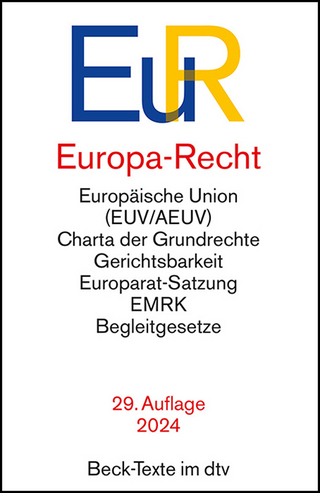
Tax Planning and Compliance for Tax-Exempt Organizations
John Wiley & Sons Inc (Verlag)
978-1-119-48650-3 (ISBN)
- Titel ist leider vergriffen;
keine Neuauflage - Artikel merken
Nonprofit organizations—including health and welfare organizations, colleges and universities, private foundations, churches, libraries, museums, cultural institutions, and other smaller groups—contend daily with the possibility of losing their tax-exempt status. From qualifying and applying for that status, to maintaining and managing it, every nonprofit organization must plan and monitor ongoing procedures, activities, and forms to comply with federal, state, and local regulations.
Access easy checklists for reporting, compliance, eligibility, and more
Examine sample bylaws, applications, and forms
Utilize comparison charts and other visual aids for easy reference
Review bullet lists that compare what is and what is not acceptable
Tax Planning and Compliance for Tax-Exempt Organizations is an indispensable guide to navigating the complex maze of nonprofit tax rules and regulations.
JODY BLAZEK (Houston TX) is a partner in Blazek & Vetterling LLP, a CPA firm focusing on tax and financial planning for exempt organizations and the individuals who create, fund, and work with them. BV serves over 400 nonprofit organizations providing financial reports and tax compliance and planning services. She is the author of six books in the Wiley Nonprofit Series: Revised Form 990; Nonprofit Financial Planning Made Easy; IRS Form 1023 Preparation Guide; Tax Planning and Compliance for Tax-Exempt Organizations, 4e; Private Foundations: Tax Law and Compliance, 3e; and The Legal Answer Book for Private Foundations, the latter two volumes co-authored with Bruce R. Hopkins. Blazek serves on the Panel of the Nonprofit Sector, Transparency and Financial Accountability Work Group. She is past Chair of the Tax-Exempt Organizations Resource Panel and a member of Form 1023 and 990 Revision Task Forces for the American Institute of Certified Public Accountants.
Preface ix
Part I Qualifications of Tax‐Exempt Organizations 1
Chapter 2 Qualifying Under IRC § 501(c)(3) 3
*§ 2.1 Organizational Test 3
*§ 2.2 Operational Test 3
Chapter 3 Churches 5
*§ 3.1 Types of Religious Organizations 5
§ 3.2 Churches 5
Chapter 4 Charitable Organizations 7
§ 4.2 Promotion of Social Welfare 7
*§ 4.3 Lessening Burdens of Government 7
*§ 4.6 Promotion of Health 9
Chapter 5 Educational, Scientific, and Literary Purposes, and Prevention of Cruelty to Children and Animals 21
§ 5.1 Educational Purposes 21
§ 5.4 Testing for Public Safety 22
Chapter 6 Civic Leagues and Local Associations of Employees: § 501(c)(4) 23
§ 6.1 Comparison of (c)(3) and (c)(4) Organizations 23
§ 6.2 Qualifying and Nonqualifying Civic Organizations 24
§ 6.4 Neighborhood and Homeowner’s Associations 26
*§ 6.5 Disclosures of Nondeductibility 26
*Chapter 7 Labor, Agricultural, and Horticultural Organizations: § 501(c)(5) 27
§ 7.2 Agricultural Groups 27
Chapter 8 Business Leagues: § 501(c)(6) 29
§ 8.2 Meaning of “Common Business Interest” 29
*§ 8.3 Line of Business 29
*§ 8.4 Rendering Services for Members 30
Chapter 9 Social Clubs: § 501(c)(7) 33
§ 9.1 Organizational Requirements and Characteristics 33
*§ 9.3 Membership Requirements 34
§ 9.4 Revenue Tests 34
*§ 9.5 Unrelated Business Income Tax 35
Chapter 10 Instrumentalities of Government and Title‐Holding Organizations 37
*§ 10.2 Governmental Units 37
§ 10.3 Qualifying for § 501(c)(3) Status 38
Chapter 11 Public Charities 41
§ 11.1 Distinction between Public and Private Charities 41
*§ 11.2“Inherently Public Activity” and Broad Public Support: § 509(a)(1) 41
§ 11.6 Supporting Organizations: § 509(a)(3) 45
Part II Standards for Private Foundations 57
Chapter 12 Private Foundations—General Concepts 59
*§ 12.2 Special Rules Pertaining to Private Foundations 59
*§ 12.4 Termination of Private Foundation Status 60
Chapter 13 Excise Tax Based on Investment Income: IRC § 4940 67
*§ 13.2 Capital Gains 67
Chapter 14 Self‐Dealing: IRC § 4941 69
§ 14.1 Definition of Self‐Dealing 69
§ 14.2 Sale, Exchange, or Lease of Property 70
*§ 14.3 Loans 72
*§ 14.4 Compensation 73
*§ 14.5 Transactions That Benefit Disqualified Persons 75
§ 14.7 Sharing Space, People, and Expenses 76
*§ 14.8 Indirect Deals 78
§ 14.9 Property Held by Fiduciaries 78
*§ 14.10 Issues Once Self‐Dealing Occurs 79
Chapter 15 Minimum Distribution Requirements: IRC § 4942 81
§ 15.1 Assets Used to Calculate Minimum Investment Return 81
§ 15.2 Measuring Fair Market Value 82
§ 15.4 Qualifying Distributions 82
§ 15.6 Satisfying the Distribution Test 91
Chapter 16 Excess Business Holdings and Jeopardizing Investments: IRC §§ 4943 and 4944 95
§ 16.1 Excess Business Holdings 95
§ 16.2 Jeopardizing Investments 97
*§ 16.3 Program‐Related Investments 98
§ 16.4 Penalty Taxes 100
Chapter 17 Taxable Expenditures: IRC § 4945 103
*§ 17.1 Lobbying 103
*§ 17.3 Grants to Individuals 104
*§ 17.4 Grants to Public Charities 109
*§ 17.5 Grants to Foreign Organizations 112
§ 17.8 Excise Taxes Payable 113
Part III Obtaining and Maintaining Tax‐Exempt Status 145
Chapter 18 IRS Filings, Procedures, and Policies 147
*§ 18.1 IRS Determination Process 147
§ 18.2 Annual Filing of Forms 990 163
§ 18.3 Reporting Organizational Changes to the IRS 170
§ 18.4 Weathering an IRS Examination 170
§ 18.5 When an Organization Loses Its Tax‐Exempt Status 171
Chapter 19 Maintaining Exempt Status 191
§ 19.1 Checklists 191
Chapter 20 Private Inurement and Intermediate Sanctions 197
*§ 20.1 Defining Inurement 198
§ 20.2 Salaries and Other Compensation 199
§ 20.4 Finding Salary Statistics 199
§ 20.8 Services Rendered for Individuals 200
§ 20.10 Intermediate Sanctions 200
Chapter 21 Unrelated Business Income 201
§ 21.1 IRS Scrutiny of Unrelated Business Income 201
*§ 21.4 Definition of Trade or Business 202
§ 21.5 What is Unrelated Business Income? 202
*§ 21.7 “Substantially Related” 203
*§ 21.8 Unrelated Activities 204
§ 21.10 Income Modifications 207
*§ 21.11 Calculating and Minimizing Taxable Income 208
*§ 21.12 Debt‐Financed Property 211
§ 21.13 Museums 213
§ 21.15 Publishing 213
Chapter 23 Electioneering and Lobbying 215
§ 23.1 Election Campaign Involvement 215
§ 23.2 Voter Education versus Candidate Promotion 215
Chapter 24 Deductibility and Disclosures 217
*§ 24.1 Overview of Deductibility 217
*§ 24.2 Substantiation and Quid Pro Quo Rules 222
Chapter 25 Employment Taxes 223
*§ 25.2 Ministers 223
Index 229
| Erscheinungsdatum | 24.07.2018 |
|---|---|
| Verlagsort | New York |
| Sprache | englisch |
| Maße | 175 x 252 mm |
| Gewicht | 445 g |
| Themenwelt | Recht / Steuern ► EU / Internationales Recht |
| Recht / Steuern ► Steuern / Steuerrecht | |
| ISBN-10 | 1-119-48650-5 / 1119486505 |
| ISBN-13 | 978-1-119-48650-3 / 9781119486503 |
| Zustand | Neuware |
| Haben Sie eine Frage zum Produkt? |
aus dem Bereich


